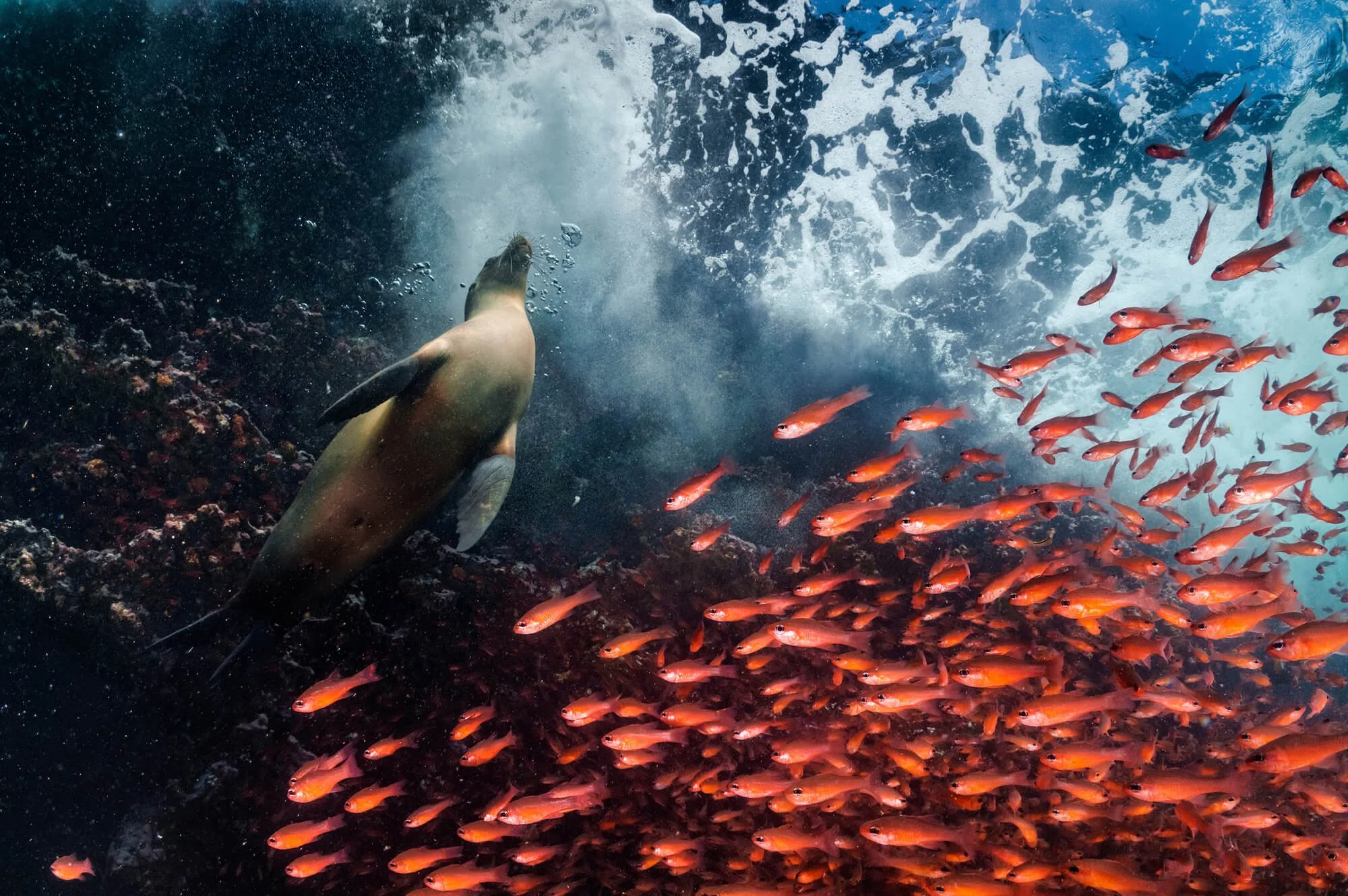On location: Baja
Underwater photographer and Parley collaborator Rick Miskiv takes us to Baja, where marlin and sea lions compete for dense, swirling schools of mackerel and sardines
“Splendor awaits in minute proportions”
– Biologist and naturalist Edward O. Wilson
Baja California Sur is a narrow peninsula that broke away from the Mexican mainland about two million years ago thanks to tectonic activity. The water that now fills that void is called the Sea of Cortez – described by Jacques Cousteau as “the world’s aquarium.” On the peninsula’s other coast lies the vast Pacific Ocean, tempered by bays and barrier islands like the ones around Bahía de Magdalena, where our small boat departs from. Heading for the open sea on a cold, foggy morning, the rugged silhouette of the coastline contrasts against grey skies as we leave land behind us.
Miles out in the open ocean, our crew scans the horizon in all directions, looking for the activity of seabirds. Flocking birds diving at the ocean’s surface is one of the best indicators of the presence of bait balls – where small fish like mackerel or sardines school to form densely packed, swirling formations. This spherical grouping of fish is created by the herding of predators. Marlins or sea lions, for example, will find fish in the depths, then by circling in increasingly tighter passes, corral the fish to the surface. The mackerel and sardines are quite fast, and by pushing them to surface, the predators reduce their escape options and also make the bait visible to the birds from high above the water’s surface.
The surface intervals on the boat in between bait ball activity can last for hours and the conditions can be cold and rough when the weather is not cooperating. The bait ball action moves fast, suddenly and without warning. Sometimes the pace is so frenetic it’s not even remotely possible to keep up – striped marlin can reach speeds of 50mph. On day three of the expedition, we were lucky to come upon a good size static bait ball of mackerel being hunted by striped marlins and sea lions. As part of a group of divers that were surrounding the bait ball, gradually, as this natural spectacle unfolded, we shifted from being mere observers to participants.
In the open blue ocean, sea lions and marlins cooperatively alternated taking turns at the hunt. Like a virtual tag team, the sea lions would pull back and the marlins would move in. Each group tended to the ball, maintaining its shape and occasionally splitting the middle and disrupting the fish in rushing attacks. The sea lions are the apex predator in this scenario and the marlins would yield to them – yet if we divers moved too close, both the sea lions and marlins would fall back, apparently allowing our turn to “hunt”.
Mackerel often rush to nearby divers for protection and it’s not uncommon to suddenly find yourself at the center of this swarming group of panicked fish. The marlins are highly evolved and attack in a darting, explosive manner. In contrast, sea lions are graceful and playful in their movements. They make sweeping, acrobatic lines around and through the bait ball. Curious creatures, the sea lions take particular notice of outsiders. Breaking the surface for air, they dive down straight towards you and right into your face. Looking you in the eyes, they’ll wait before executing sharp 90° turns at the last minute and diving away.
Our next destination was Los Islotes, located on the southern end of the Sea of Cortez. A breeding colony of California sea lions, upwards of 400 of them can take temporary residence on the set of rocky islets. I entered the cold water with my scuba gear and tested settings on my camera. The distinct sound of male sea lion barks underwater at close range; a clear signal that this is his territory. Nearby a mother seal lion is nursing a pup in a shallow nook on the rocks. Meanwhile young sea lions are at play. Sticks, shells, and starfish are all game.
The sea lions are aware of our presence, taking note, inviting us to play. Suddenly, I feel a tug on my leg and turn abruptly with surprise. Looking back at me are the gentle eyes of a very young sea lion pup playfully tugging on my fin with its flippers. For a brief moment, I am no longer an outsider in this beautiful world – but finding “splendor in minute proportions.”




















